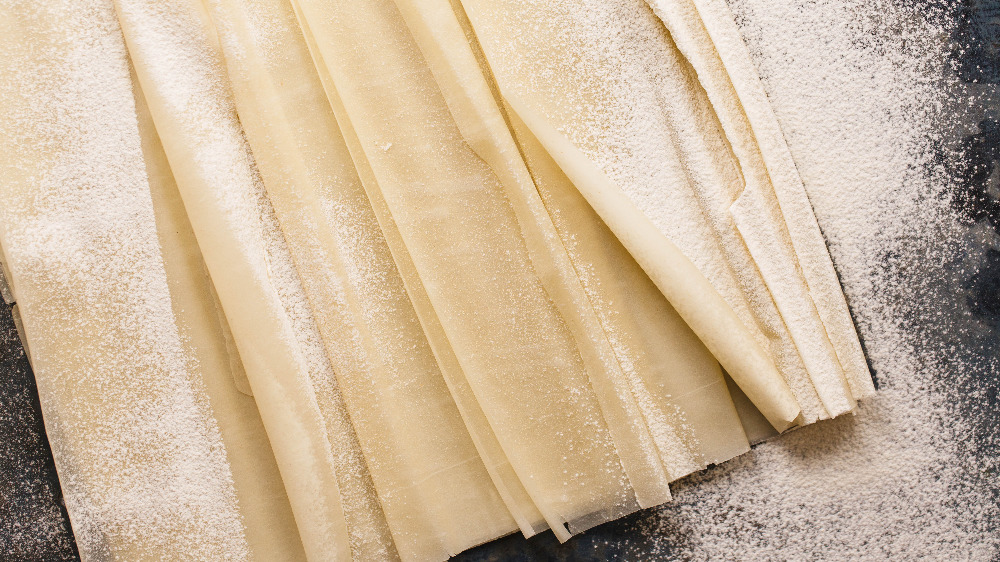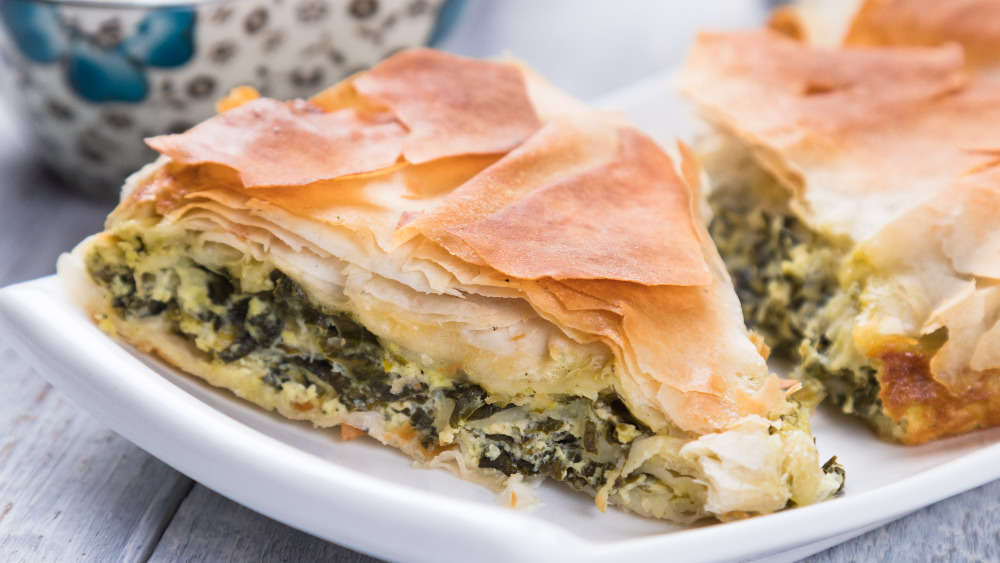What Are Phyllo Sheets And What Are They Used For?
We're always looking for ways to make prepwork in the kitchen a little easier, and there are a ton of shortcuts you can use. If you do a lot of baking, you definitely want to keep phyllo sheets stocked in your pantry. They're a lot quicker and easier than making your own pastry, and there are plenty of different ways you can use them when you're cooking.
Not to be confused with puff pastry, phyllo dough (also sometimes spelled filo) are super-thin sheets of dough that don't have much fat, according to Kitchn. Phyllo means "leaf" in Greek, which is a good descriptor of just how thin the dough is. Usually, you'll find it in the freezer section of the grocery store in rolls or flat sheets. Since the sheets themselves don't have that much fat, most recipes call for brushing them with butter or oil before baking so they'll get flaky and crispy in the oven.
You can make your own phyllo sheets if you want, but it's much easier to look for them at the store. According to Allrecipes, the only ingredients you need for phyllo dough are flour, olive oil, salt, warm water, and white wine vinegar. However, in order to get the dough to bake into a flaky pastry, you have to spend a lot of time kneading, rolling, layering, and re-rolling it, so if you're looking to cut down on the time you spend in the kitchen, definitely buy instead of making your own.
How to use phyllo dough
According to Kitchn, phyllo dough is commonly used in Greek recipes like baklava and spanakopita. Usually, it's popular for desserts and appetizers, and it can also be baked into cups and stuffed with sweet or savory fillings. Unlike puff pastry, it stays thin and crisp once it's baked, so it should have a nice crunch when you bite into it. But, no matter how you decide to use it, before you get to work you should know that phyllo dough can be a little tricky and temperamental.
According to The Spruce Eats, it's best thawed in the fridge, and you should have every other ingredient in your recipe ready to go before you open and start working with the dough. Then, bring it to room temperature and make sure your hands are as dry as possible when you're touching the dough. Phyllo can dry out quicker than you think, so as you're removing sheets from the packaging, make sure to cover up the rest of them right away. Since it's so thin, it can also tear easily, but it's also super easy to patch up and won't show once it's finished baking. It's definitely worth a little fuss for a tray of cute dessert cups or elegant, tasty appetizers!

